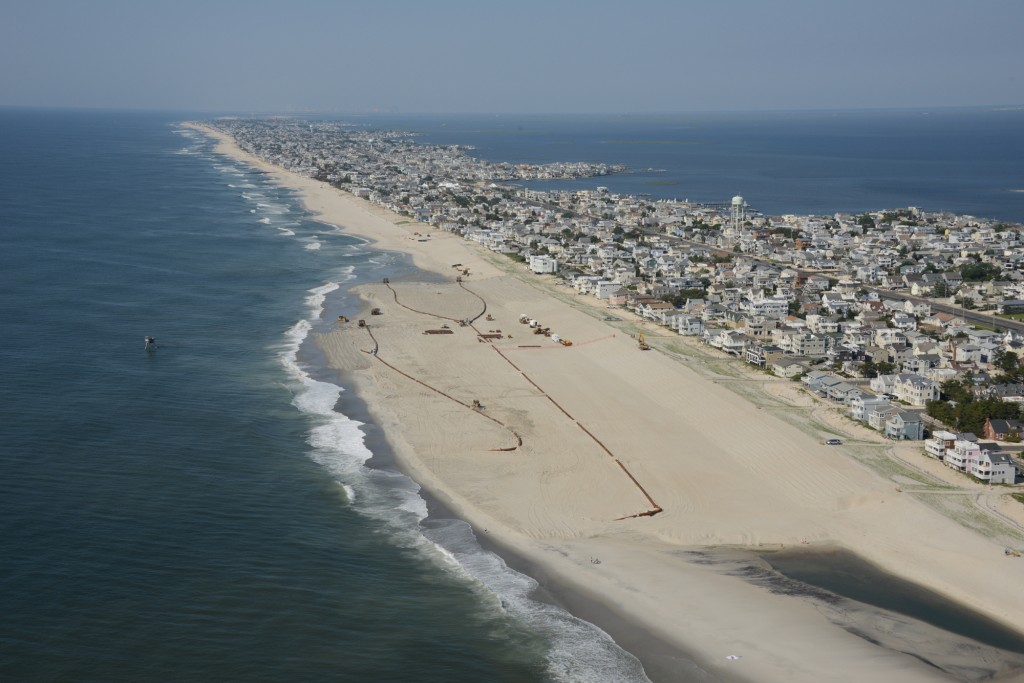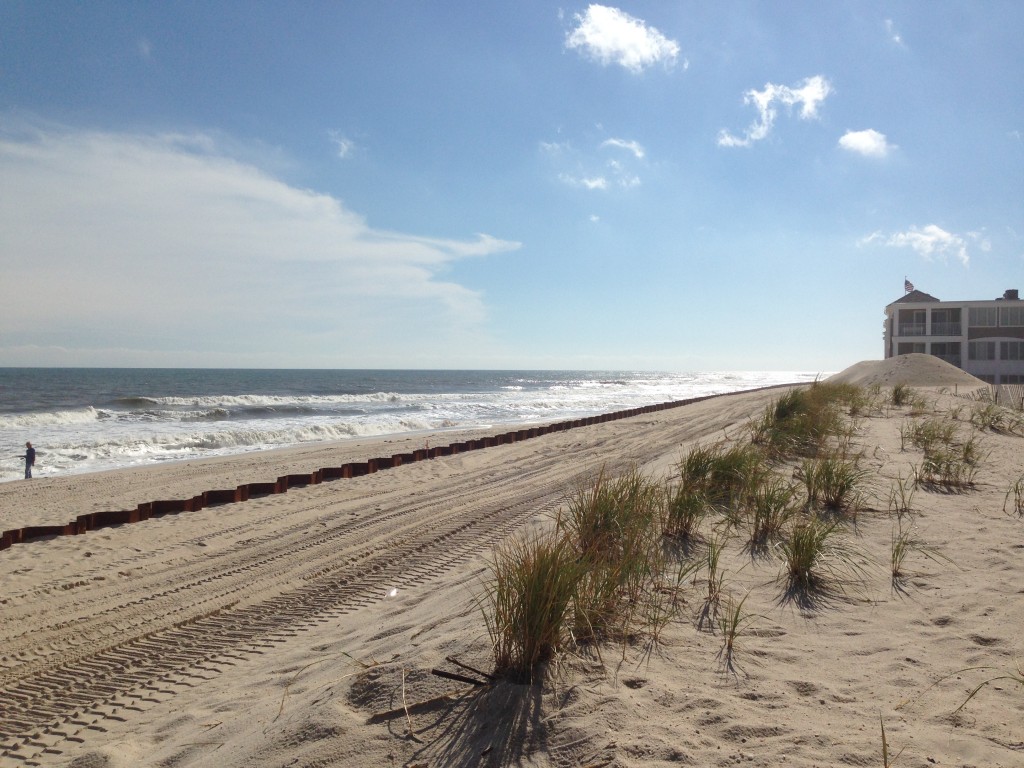
A beach replenishment project in the Brant Beach section of Long Beach Township. A similar project is being planned for Ocean County’s northern barrier island, including Brick and Mantoloking. (Photo: U.S. Army Corps of Engineers)
As the start of one of the most ambitious beach replenishment projects on the eastern seaboard looms months away, Brick and state officials are in the final stages of condemning the properties of 44 homeowners who refused to sign easements allowing the shore protection measure to get underway.
The vast majority of Brick’s oceanfront property owners have voluntarily signed the easements that allow crews to construct the 23 foot-high protective dunes included in the project, which will also extend beaches to at least 200 feet in width. In order for the dunes to be constructed – and maintained by the federal government for the next 50 years – work crews need access to small slivers of sand in front of homes that are privately owned.
In Brick, 76 homeowners voluntarily signed the easements, while 44 were refusing to sign, said Joanne Bergin, the township’s business administrator. Of the 44 holdouts, 39 surveys have been completed in preparation for appraisal and condemnation proceedings while five surveys are still being completed but have not been delivered.
|
|
The state is paying the legal fees associated with the condemnations under an agreement approved by the township council earlier this year. Following a New Jersey Supreme Court ruling last summer which threw out a $375,000 jury award to a Harvey Cedars couple who had the easement area condemned, a slew of later condemnations resulted in awards of no more than a few hundred dollars. In its ruling, the justices wrote that oceanfront property owners are not entitled to a “windfall” and the dunes can add value to their properties because of the protection they provide.
Last week, the state Department of Environmental Protection announced that 80 percent of the state’s easements from Sandy Hook to Cape May had been obtained. In response to the destruction caused by Superstorm Sandy two years ago, as well as the announced availability of federal funding for coastal hurricane and storm damage reduction projects, Gov. Chris Christie issued an executive order last year which, among other things, directed state agencies to take whatever action was required to obtain property easements.
At the time the order was issued, 2,850 public and private easements were required. By last week, about 2,400 of them had been obtained.
In Brick, obtaining the easements has been an effort in diplomatic negotiations with homeowners and an advanced planning project for township officials and their contractors. The tedium of the process has led to delays in the project getting off the ground. In one example, a condominium complex, the Mantoloking Dunes Club, provided voluntary easements for all but one of their lots, which was inadvertently left out of the legal documentation.
“They have agreed to provide the documents however, we have not received them as of yet,” said Bergin.
The Army Corps of Engineers, which is administering the project, is also reviewing Brick’s easements because there may be more easements required now than when the dune line was initially drawn, Bergin said. The project’s planning dates back more than a decade.
“The NJDEP will be providing us with the additional lots that we may have to obtain easements,” said Bergin. “If this is the case, and we have additional lots, the township will have to prepare another ordinance authorizing the pursuit of those new easements.”
Through the lengthy process of obtaining the easements, state and local officials have remained steadfast in their desire to move forward with the dune and beach replenishment program, especially considering the breach which created an inlet at Herbert Street in Mantoloking during Sandy.
“Sandy taught us sobering lessons about the critical need for beach and dune systems as an integral part of making New Jersey more resilient in the face of future storms and floods,” said DEP Commissioner Bob Martin.
In some municipalities where the same replenishment project had been previous completed – such as Surf City and Harvey Cedars – damage from the storm was significantly reduced.
“We commend the property owners who have done the right thing by working with us and understanding their civic responsibility in helping to protect their communities and their neighbors,” Martin said. “Those who continue to hold out must step up as well, or we will take necessary steps to secure those easements.”
The replenishment project is currently scheduled to begin after the first of the year in 2015. The current project, a steel revetment project that is limited to Brick and Mantoloking only, is a state-led project that is separate.










